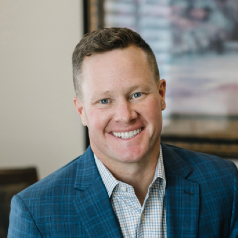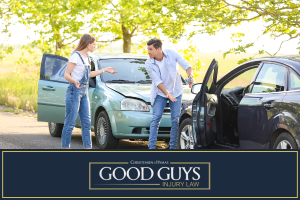
Determining who is at fault in a chain reaction car accident can be complex. These accidents involve multiple vehicles and happen quickly, making it hard to decide what went wrong. Each driver’s actions contribute to the accident; sometimes, more than one person is at fault. Lawyers and insurance companies must work hard to untangle the events that led to the crash.
Chain reaction accidents are common in Utah, where many roads see heavy traffic. Experts examine evidence, police reports, and state laws to determine who is at fault. Knowing who caused the accident affects insurance claims and legal responsibility. Good Guys Injury Law specializes in analyzing these accidents to protect the rights of those involved. We understand that chain reaction collisions can be devastating. Learn more about what to do after a chain reaction crash below. Then, contact us to schedule a free consultation to discuss your chain reaction collision.
Table of Contents
Understanding Chain Reaction Car Accidents
Chain reaction car accidents occur when three or more vehicles collide in a series of rear-end accidents. These can start with a single car that brakes suddenly, leading others to crash into one another. The force from the first collision pushes vehicles into each other like dominoes. Determining fault in these accidents requires a detailed investigation.
What Constitutes a Chain Reaction Accident?
A chain reaction accident involves multiple impacts where each car hits the one in front of it. This can happen on highways or busy streets. Conditions like bad weather or poor visibility often contribute to these accidents. Each driver’s reaction time and following distance play a role in the crash.
Investigating these accidents means examining how closely cars followed each other and how fast they went. Experts also consider whether any drivers were distracted. This information helps determine who is responsible for the accident. Sometimes, more than one driver shares the blame.
The Basics of Fault Determination in Chain Reaction Accidents
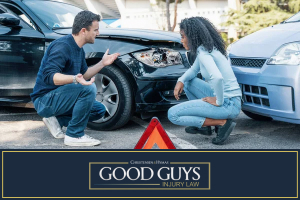
Understanding each driver’s actions before the crash involves figuring out who is at fault. Utah law considers factors like speeding, sudden stops, and tailgating. In chain reaction accidents, the first car to cause an impact is often—but not always—considered at fault. However, each case is unique, and multiple drivers can be partly to blame.
Legal Principles Influencing Fault Allocation
Utah follows a comparative negligence rule, meaning drivers can share fault. This rule looks at each driver’s contribution to the accident. For example, if drivers followed too closely or were distracted, they might share the fault. Lawyers use these principles to argue their client’s cases in court or with insurance companies.
Fault allocation also depends on evidence like skid marks, vehicle damage, and witness statements. This evidence helps reconstruct the accident. Legal experts and accident reconstructionists often work together to understand how the accident happened and who is to blame.
Investigating a Chain Reaction Accident
A thorough investigation is critical to understanding these complex accidents. This process involves collecting evidence, interviewing witnesses, and sometimes recreating the accident scene. Lawyers and insurance adjusters examine all details to accurately determine fault among drivers A, B, and driver C.
The Role of Police Reports
Police reports are crucial in multi-vehicle accidents. These reports contain the officer’s observations, diagrams of the accident scene, and, sometimes, preliminary assessments of fault. Insurance companies and lawyers use these reports to understand the accident’s dynamics.
Officers also gather statements from drivers and witnesses at the scene. These statements can be vital in determining what happened. However, police reports are not the final word on fault in a car crash. Additional evidence can also play a significant role in the investigation.
Gathering and Analyzing Evidence
Evidence collection includes:
- Photos of the accident scene;
- Damage to vehicles; and
- Any road conditions that might have contributed to the accident.
This evidence helps create a clear picture of how the accident happened. Lawyers often work with experts to analyze this evidence and build a case for their clients, mainly true if distracted driving is involved.
Reach Out To a Car Accident Lawyer as Soon as Possible
You must contact a car accident lawyer quickly if you’re involved in a chain reaction accident. A lawyer can help you navigate the legal process and protect your rights. They can also start collecting evidence before it’s lost or destroyed.
A lawyer will guide you through filing insurance claims and dealing with other drivers’ insurance companies. They can also represent you in court if necessary. Legal support can make a big difference in the outcome of your case.
Common Scenarios and Liability in Chain Reaction Accidents
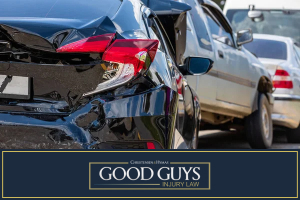
Chain reaction accidents often involve rear-end collisions and can occur in various scenarios. Understanding these everyday situations helps identify faults and liability for drivers A, B, and C.
Rear-End Collisions: The Domino Effect
Rear-end collisions are a common cause of chain reaction accidents. Typically, the driver who hits the first car is considered at fault for not maintaining a safe distance. However, they may share the liability if subsequent drivers also hit the cars before them. You need an experienced car accident lawyer to help you sort through a multi-car accident.
Multi-Directional Impacts
In some chain reaction accidents, impacts come from multiple directions. This can happen in intersections or when cars try to avoid the initial collision. These situations are particularly complex, and faults may be shared among several drivers. This type of chain reaction traffic accident can be devastating. Let us help you work through a multi-vehicle accident.
Comparative Negligence in Utah
Utah’s comparative negligence law allows more than one driver to be found at fault for an accident. Each driver’s fault is determined as a percentage, and compensation is adjusted accordingly. This law allows for fair treatment of all parties involved.
Under comparative negligence, your compensation can be reduced by your percentage of fault. For example, if you are found to be 25% at fault, your settlement would be cut by 25%. Understanding this rule is essential for anyone involved in a chain reaction accident in Utah. A reasonable car accident attorney can analyze your personal injuries in an accident involving more than two cars. Let a car accident lawyer help you maximize your compensation for your property damage and injuries.
The Importance of Witness Statements and Video Evidence
Witness statements and video evidence can be decisive in chain reaction car accidents. They provide an independent account of the crash, which can help lay out the sequence of events. This evidence is valuable when the drivers involved have conflicting accounts of what happened.
Insurance Companies and Fault Determination
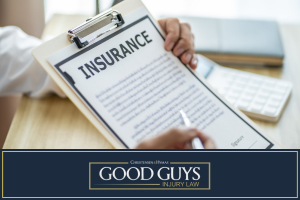
Insurance companies are a significant factor in determining fault in chain reaction accidents. They conduct their investigations, reviewing police reports, evidence, and statements from all parties involved. The goal is to determine each driver’s liability and settle claims accordingly.
Negotiating with insurance adjusters can be challenging. They aim to minimize their company’s payout, which can sometimes lead to lower offers than you deserve. Having an attorney negotiate for you can help ensure you receive fair compensation.
Legal Representation in Chain Reaction Accident Claims
Legal representation is crucial in chain reaction accident claims. A lawyer can ensure you know your obligations and rights. A car accident attorney can also provide evidence and represent you in negotiations or court. They can help you maximize the value of your settlement.
The Benefits of a Car Accident Lawyer
- A car accident lawyer understands how to sort through the tricky rules and insurance after a chain-reaction crash. They get Utah’s laws and how to use them for your situation. This means they can guide you through everything, ensuring you’re treated fairly.
- Lawyers are great at collecting and looking at all the evidence to support your case. They work with specialists who can determine exactly how the auto accident happened and who’s to blame. This helps strengthen your case when it’s time to show what happened.
- When it’s time to talk money with the insurance company, having a lawyer can make a big difference. They’re familiar with the tricks insurance people might try to use to pay you less. Your lawyer will support you, ensuring you get a fair deal.
- Lawyers are also there to explain all the legal jargon and paperwork that comes with car accident claims. They can break down the complicated stuff into something you can understand. This way, you will feel safe and confident about what’s happening with your case.
- Finally, a lawyer can take your case to court if the insurance company won’t offer what you deserve. If needed, they’re ready to fight for you before a judge and jury. With a lawyer by your side, you’ll feel confident and supported, no matter where your case goes.
How Good Guys Injury Law Can Help Determine Fault
Good Guys Injury Law has extensive experience with chain reaction accidents. We know how to investigate these complex cases and determine faults.
We know the impact a motor vehicle accident might have on your life. That’s why we’re dedicated to providing personalized legal representation. We aim to make the legal process as smooth and stress-free as possible.
Good Guys Injury Law: Contact Our Good Guys Injury Law for a Free Consultation

If you’ve been involved in a chain reaction car accident, Good Guys Injury Law is here to help. We’re committed to achieving the best possible outcome for your case.
Don’t navigate the aftermath of a chain reaction accident alone. Contact us for a free consultation. We’ll review your case, answer your questions, and explain how we can help. Let us be your advocate and ensure your rights are protected.






